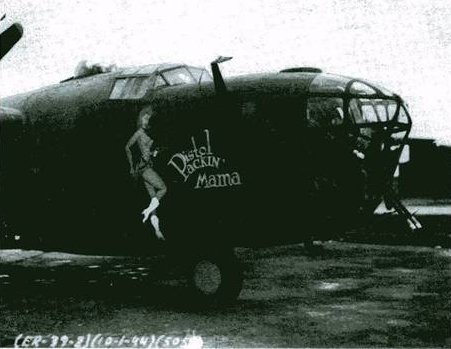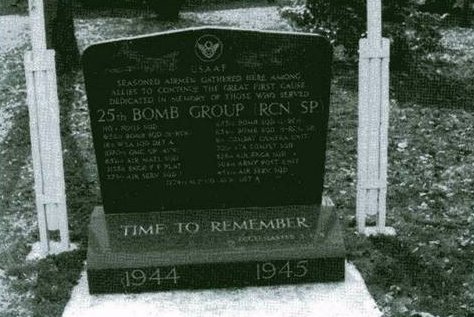
The American Airman
On 22nd April 1944 the 25th Bomb Group arrived under the command of Col. Eliot Roosevelt, son of the American President, Franklyn D. Roosevelt. It was a unique group in that they flew the British Mosquitos. The men who flew with the 25th had already completed a tour of 35 combat missions and had volunteered to fly with the 25th B.C. The Mosquitos were completely unarmed which enabled them to fly faster and higher than other aircraft. They were involved in weather reconnaissance, photographic reconnaissance, pathfinding and espionage missions. The 25th also flew a few B17's on weather reconnaissance. A very well kept secret was the presence of the "Black Liberators" ("The Carpet-baggers") who flew top secret espionage missions. The 25th B.C. left Watton on 23rd July 1945 and the 3rd S.A.D. on 5th August 1945. The 25th Bomb Group lost about 70 airmen and the repair unit just one, a Chaplain who volunteered for work in France and was killed in a Jeep acci dent. In June 1984 fifty former U.S. Airmen returned to Watton R.A.F. for the unveiling of a most beautiful Memorial situated just inside the Main Gates.
The Station re-opened late in 1945 as the Radio Warfare Establishment and in 1946 this became the Central Signals Establishment. In October 1965 Eastern Radar was established and came into operation as a parented Unit adjacent to the Station. It is functionally and operationally controlled by NATO and gives radar control and surveillance to all aircraft overflying East Anglia. The news that the R.A.F. was to be run down at the end of 1969 carne as a bombshell to the town, especially as it was feared that about 250 civilian jobs would be lost and the customer potential of the town's shops could be reduced by fifty per cent. Today part of the station is occupied by the Honington R.A.F. Admin. Wing Detachment, but sad ly many of the houses and buildings are unoccupied. Army personnel from the nearby Stanford Bat tle Area make use of the airfield for training purposes while the airmen's mess on the opposite side of the road to the main camp has been sold and is used as industrial units. I never pass the Main Gates without reflecting on my school days, as for many years my father farmed the fields where many of the important buildings were erected, including the Station Head Quarters, Guard Room, Hospital, Sergeant's Mess and Air Ministry Offices. Many a time I have gone home very tired after planting potatoes all day, helping with the harvest and, like most boys in those days, thought it great fun chasing rabbits as they bolted for the safety of the hedges when the last few strips of corn were about to be cut. * |



